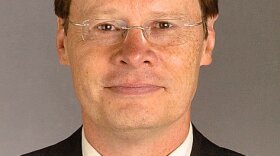It’s well established that the income gap between rich and poor in America has increased over the past few decades. Income inequality among developed nations is highest in the United States. Most of the growth in this inequality has been between the middle class and top earners, with the disparity becoming more extreme the further one goes up in income.
But less well known is that there is a health gap too – and it is also increasing.
Even as the nation’s life expectancy has increased, reaching 78.5 years in 2009, new research is showing that those gains are going mostly to those at the upper end of the income ladder.
A Social Security Administration study several years ago found that the life expectancy of male workers retiring at 65 had risen six years if he was in the upper half of income but only a little more than one year in the bottom half over the previous three decades.
In 1980, life expectancy at birth was 2.8 years longer for the wealthiest group than the lowest, according to a report by the Congressional Budget Office. By 2000, the gap had grown to 4½ years. And it’s worse today.
The gap in life expectancy has widened as the country’s income gap has grown. Not only is life expectancy diverging by income level, but some groups — particularly low-income white women — are losing ground.
The journal Health Affairs recently reported that in almost half of the nation’s counties, women younger than 75 are dying at rates higher than before. The counties where women’s life expectancy is declining typically are in the rural South and West, the report said.
The share of adults in poverty with asthma (17 percent) or obesity (32 percent) was also roughly 6 percentage points higher in each case than the share of adults not in poverty. The study also showed that diabetes, high blood pressure, and heart attacks were slightly more likely to occur to those in poverty than those who are not.
One reason for these differences is health habits. Smoking was far more prevalent among adults in poverty, 33 percent of whom said they were smokers, compared to 20 percent of those not in poverty.
Also, just over half — 52 percent — of adults above the poverty line said that they exercise for at least 30 minutes, three or more days a week, compared to 48 percent of adults in poverty.
Meanwhile, 56 percent of adults who are not in poverty said that they eat five or more servings of fruits and vegetables, four or more days a week — nearly 6 percentage points higher than the share of adults in poverty who said they did the same.
So what should be done? Obviously, efforts to ensure that lower income New Yorkers have adequate access to health care is one step. People without such access are more likely to not know about healthier lifestyles and are less likely to get the support they need to improve their health – such as quitting smoking.
But a broader approach is needed too. Efforts to expand educational opportunities will also enhance incomes, thus making it less likely that our fellow Americans will be suffering from unhealthy conditions and experiencing shorter lives.
In short, less poverty means a healthier America.
Blair Horner is the Vice President for Advocacy for the American Cancer Society, Eastern Division. His commentary does not necessarily reflect the views of the American Cancer Society.
The views expressed by commentators are solely those of the authors. They do not reflect the views of this station or its management.


